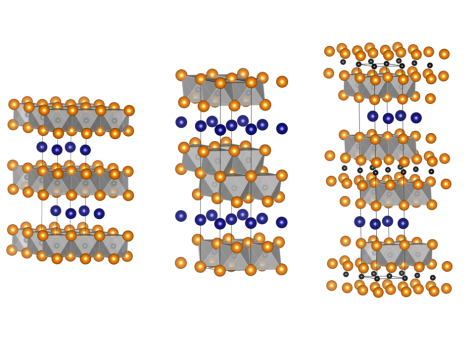MAX phases are ternary carbides that consist of an early transition metal (M), a main group element (A) and either carbon or nitrogen (X). The Mn+1AXn compounds crystallize in a hexagonal structure with alternating layers of M6X-octahedra and A elements. In general, one can distinguish between 211 phases with n = 1, 312 phases with n = 2 and 413 phases with n = 3, where the A layers are separated by two, three or four layers of octahedra, respectively.
MAX phases typically contain early transition metals and their mechanical properties are widely studied. They exhibit metallic as well as ceramic characteristics. The most intriguing aspect about this class of materials is the ease with which the chemistry can be changed while maintaining the same crystal structure.
The magnetic properties are hardly investigated. However, due to the large number of possible compounds within this material class, interesting magnetic phenomena are expected to occur in combination with elements with high magnetic moment (manganese, iron, cobalt).
MAX phases with later transition metals
We have successfully prepared M2AlC (M = Ti, V, Cr), V4AlC3, Ti2SnC und Ti3SiC2 by microwave heating and spark plasma sintering. The materials are obtained time efficiently and with good quality.
Moreover, we have incorporated small amounts of Mn (and Fe) into Cr2AlC and V2AlC. The materials are then characterized my complex microstructures with side phases that are identified and quantified in order to discuss the bulk magnetic properties.



